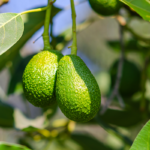Chinese nut market to be undersupplied in 2018-19 due to U.S. tariffs

 The U.S. Department of Agriculture (USDA) estimates that China will not be able to fill the nut supply gap there will likely be in 2018-19 as a result of tariffs in U.S. imports.
The U.S. Department of Agriculture (USDA) estimates that China will not be able to fill the nut supply gap there will likely be in 2018-19 as a result of tariffs in U.S. imports.
The USDA expects China's imports of U.S. walnuts, almonds and pistachios to decline across the board due to the tariff increases earlier this year.
Tariffs for the three nuts (both shelled and in-shell) as of July 6 are between 45% and 65%. By comparison, Australia has no more than 5% on those three nuts and Chile is tariff-free.
In addition to the expected drop in U.S. volumes in China, Chinese walnut production is expected to fall by 15% to 850,000 metric tons (MT) in 2018-19 due to frost damage earlier this year. Meanwhile, Almond production is forecast flat at 43,000MT, and pistachio production is extremely low in China, with only 300MT due to be produced.
"Because China has enacted a number of additional tariffs on U.S. products, Chinese importers will be less likely to purchase certain tree nuts from the United States," the USDA said.
"The market share once occupied by the United States will be difficult to fill by other competitors due to limited substitutable suppliers. Further exacerbating the problem, China recently tightened control over imports transshipped through border programs.
"As a result, Chinese buyers are looking for other import sources and will probably increase purchases of alternative nuts, such as cashews and Brazil nuts."
For pistachios, which were China's number-one imported tree nut in 2017 - the USDA said Chinese importers were seeking substitute supplies from other producers such as Iran, the second largest pistachio supplier to China. But a "sharp production decrease" in Iran will likely limit its capabilities to fill the gap.
Other producers, including Turkey and Syria, have no direct access to the China market.
As for almonds, although China's imports, of shelled products in particular, have been on the rise over the past few years, import volume is projected to "fall sharply" 2018-19.
"Currently, more than 95 percent of China’s almond imports come from the United States. Although Australia also exports almonds to China, its exportable supplies are far from enough to satisfy the China market," it said.
China and Hong Kong together consumed around 7% of the world’s almonds in 2017.
The country's walnut imports are also expected to further decline in 2018-19 from the previous year. The U.S. has in the past been China’s single largest walnut supplier.
"Although Chinese importers are searching for substitute products from Chile and Australia, their available supplies can hardly fill the gap," the USDA said.
"On the other hand, China’s overall imports of walnuts, especially in-shell products, have been falling from its peak in 2012, mainly because of rapid increases in domestic production."














































